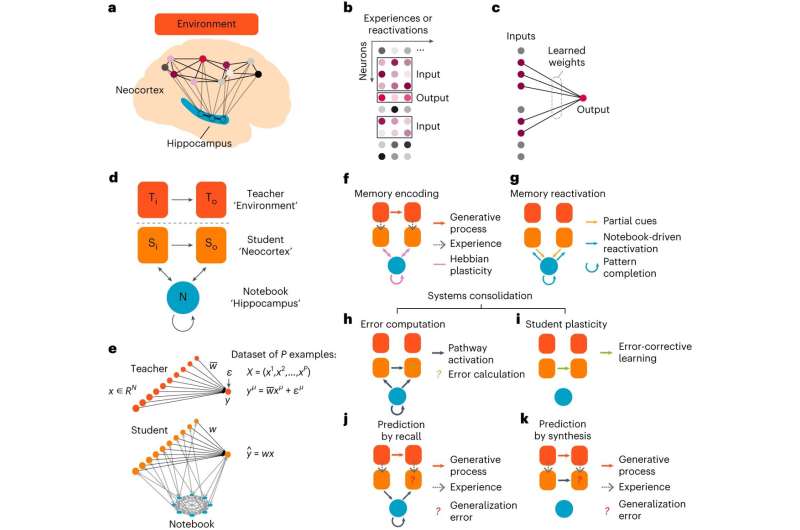This article has been reviewed according to Science X's editorial process and policies. Editors have highlighted the following attributes while ensuring the content's credibility:
fact-checked
peer-reviewed publication
trusted source
proofread
New theory better explains how the brain stores memories

How useful a memory is for future situations determines where it resides in the brain, according to a new theory proposed by researchers at HHMI's Janelia Research Campus and collaborators at UCL.
The theory, published in Nature Neuroscience, offers a new way of understanding systems consolidation, a process that transfers certain memories from the hippocampus—where they are initially stored—to the neocortex—where they reside long-term.
Under the classical view of systems consolidation, all memories move from the hippocampus to the neocortex over time. But this view doesn't always hold up; research shows some memories permanently reside in the hippocampus and are never transferred to the neocortex.
In recent years, psychologists proposed theories to explain this more complicated view of systems consolidation, but no one has yet figured out mathematically what determines whether a memory stays in the hippocampus or whether it is consolidated in the neocortex.
Now, Janelia researchers are putting forward a new, quantitative view of systems consolidation to help resolve this longstanding problem, proposing a mathematical neural network theory in which memories consolidate to the neocortex only if they improve generalization.
Generalizations are constructed from the reliable and predictable components of memories, enabling us to apply them to other situations. We can generalize certain features of memories to help us understand the world, like the fact that canyons predict the presence of water.
This is different from episodic memories—detailed recollections of the past that have unique features, like an individual memory we have of hiking to a particular canyon and coming upon a body of water.
Under this view, consolidation doesn't copy memories from one area of the brain to another but rather creates a new memory that is a generalization of previous memories. The amount that a memory can be generalized—not its age—determines whether it is consolidated or remains in the hippocampus.
The researchers used neural networks to show how the amount of consolidation varies based on how much of a memory is generalizable. They were able to reproduce previous experimental patterns that couldn't be explained by the classical view of systems consolidation.
The next step is to test the theory with experiments to see if it can predict how much a memory will be consolidated. Another important direction will be to test the authors' models of how the brain might distinguish between predictable and unpredictable components of memories to regulate consolidation. Uncovering how memory works can help researchers better understand an integral part of cognition, potentially benefiting human health and artificial intelligence.
More information: Weinan Sun et al, Organizing memories for generalization in complementary learning systems, Nature Neuroscience (2023). DOI: 10.1038/s41593-023-01382-9



















